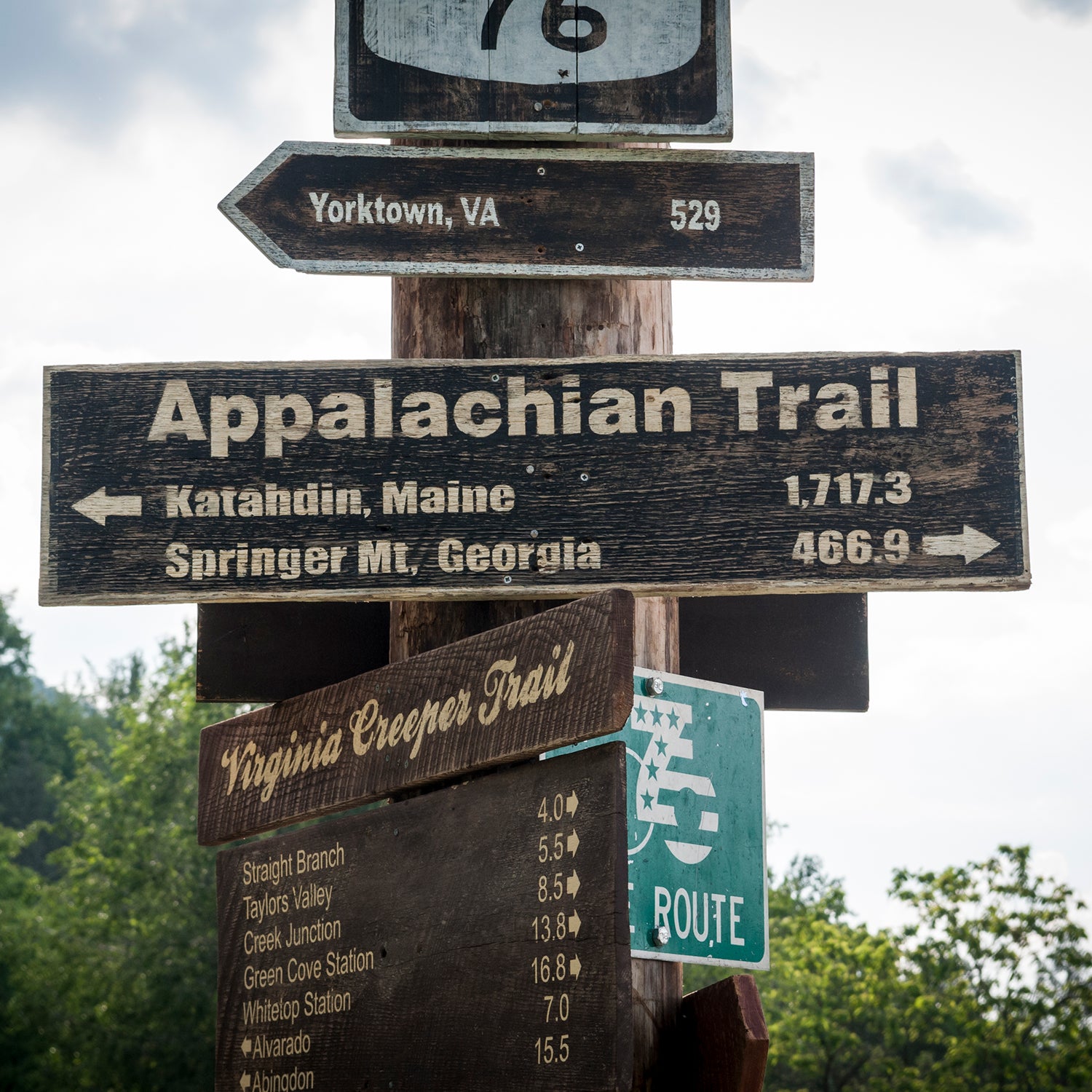James L. Jordan, 30, of West Yarmouth, Massachusetts, appeared in federal court Monday, where he was╠řcharged with with intent to commit murder after a bloody attack early Saturday morning on the Appalachian Trail left one hiker dead and another hospitalized. A judge ordered Jordan be held in custody pending a psychiatric evaluation.
According to the criminal complaint filed in the U.S.╠řDistrict Court for the Western District of Virginia, the incident began when Jordan approached a group of four hikers (court filings do not indicate how the four were connected) somewhere in Jefferson National Forest in western Virginia╠řon Friday evening.╠ř
In the court documents, the hikers said that Jordan was ÔÇťacting disturbed and unstable, and was playing his guitar and singing.ÔÇŁ Later that night, the four set up camp a few miles from where the first encounter occured, in Wythe County, Virginia. Jordan appeared and began threatening the hikers in their shelters, saying that he was going to ÔÇťpour gasoline on their tents and burn them to death.ÔÇŁ At that point, the four╠řhikers╠řdecided to relocate their campsites. Jordan then confronted them with a knife. Two of the hikers ran north╠řon the trail to escape. They called 911 at 2:30 A.M., saying that they were being chased by a man with a knife.
Allegedly, Jordan eventually gave up the chase and returned to the campsite, near Mount Rogers National Recreation Area. He then reportedly╠řbegan yelling at the two remaining hikers, a man and a woman. A verbal altercation occurred╠řbetween Jordan and the male hiker, who the FBI identified on Tuesday as 43-year-old Richard S. Sanchez Jr., of Oklahoma. Sanchez made an emergency call from his cell phone. Jordan then began stabbing him╠řin the upper part of his body as the female hiker, who has not been identified, looked on.╠ř
According to the affidavit, when she saw her male companion fall to the ground, the female hiker attempted to run away. Jordan chased after her. As he caught up to her, the female hiker raised her arms in surrender. Jordan then began stabbing her.╠řShe suffered╠řseveral stab wounds before falling down and playing dead. Jordan then left and returned to the campsite, according to authorities.╠ř╠ř
After Jordan left, the female╠řhiker got up╠řand continued to run down the trail, eventually coming upon a duo who were camping╠řjust off the trail. These two backpackers then helped the female victim hike six more miles to a trailhead, where they called 911. The wounded hiker was transported to a nearby medical center in Bristol, Tennessee, where she is╠řrecovering from her injuries.╠ř
Jordan, meanwhile, made his way back down the trail and approached another pair of backpackers who were asleep in their tent, shouting at them that he needed a flashlight.
ÔÇťThey were real reluctant to just talk to him. They thought it was a little unusual,ÔÇŁ said Wythe County sheriff Keith Dunagan at a press briefing on Sunday. ÔÇťThey didnÔÇÖt even see the person, and luckily they didnÔÇÖt come out of the tent.ÔÇŁ
Using pings from a nearby cell-phone tower, authorities were able to ascertain the approximate location of the first stabbing. The tactical team of the Wythe County SheriffÔÇÖs Office╠řthen began the four-mile hike to the crime scene. At 6:14 on Saturday morning, the team arrived at the campsite where the first attack occurred. There╠řit╠řfound Sanchez's body, who died from his injuries,╠řalong with a dog╠řwhich then led the team╠řto the suspect. The deputies found╠řblood on JordanÔÇÖs clothes and arrested him.
The hikers said that Jordan was ÔÇťacting disturbed and unstable, and was playing his guitar and singing.ÔÇŁ
ÔÇťWe had our whole tac team up there, so he wisely surrendered himself,ÔÇŁ said╠řDunagan.
According to the court documents,╠řthe tactical team╠řalso discovered a large knife, believed to be the murder weapon, in close proximity to the victimÔÇÖs body.
Both the female stabbing victim and the two hikers who fled from Jordan identified him as the attacker. The sheriffÔÇÖs department, working in concert with the Virginia State Police,╠řclosed approximately 16 miles of trail to complete a crime-scene investigation. That section of the trail was reopened on Sunday.
Because the Appalachian Trail is administered by the National Park Service, the FBI has the ultimate jurisdiction╠řover crimes committed there.╠řDee Rybiski, a spokesperson for the FBI field office in Richmond, Virginia, confirmed by phone on Monday that that officeÔÇÖs Evidence Response Unit was gathering evidence╠řon the trail.
Jordan, who gave himself the trail name ÔÇťSovereign,ÔÇŁ has been a known nuisance on the trail for several months.╠řIn mid-April, he allegedly╠řthreatened several hikers at a shelter in Tennessee. When the hikers arrived at a hostel a day or so later, they reported the incident to Mike Hensley, sherriff of Unicoi County, Tennessee, who interviewed them late that night.
ÔÇťWe knew there was trouble down here with this boy,ÔÇŁ Hensley told me by phone on Monday. ÔÇťWhat really got my attention was that one of the hikers said he told them, ÔÇśItÔÇÖs going to be a bad day for hikers on the trail.ÔÇÖÔÇŁ Upon hearing that, Hensley says he immediately deployed deputies, but they were unable to locate Jordan. Authorities in North Carolina observed him a day or so later, but there was no warrant for his arrest, so they did not detain him.
According to Hensley, hikers observed Jordan behaving strangely at a trailhead on April 21,╠řasking thru-hikers for the password needed to get on the trail.╠řThen, on April 22, Jordan appeared at a road crossing where trail angels were handing out food to thru-hikers. Jordan initiated a verbal argument with some of the backpackers there, who also alerted authorities. He was apprehended with a fake ID, marijuana, and other drug paraphernalia. He was also carrying a 17-inch survival knife.╠řThat knife is being held in the evidence room at the Unicoi╠řSheriffÔÇÖs Office. ItÔÇÖs unclear when or where he purchased the knife used to kill the hiker this weekend.
According to Hensley, none of the hikers who had been assaulted by Jordan in the April incident were willing to press charges or testify in court, so Jordan was arrested only for the fake ID and drug charges. He pled guilty and was ordered to stay off the trail.
ÔÇťI done all I could do,ÔÇŁ╠řsays Hensley. ÔÇťThe only thing╠řI could do is go with the charges I had. I knew this guy was a serious problem.ÔÇŁ But news of his threatening behavior made its way up the trail, as reports of ÔÇťSovereignÔÇŁ╠řharassing other hikers continued.
Matthew ÔÇťOdieÔÇŁ Norman, a well-known former AT thru-hiker and founder of the HikerÔÇÖs Yearbook (a yearly record of hikers on the trail), encountered Jordan on May 2 at a trailhead near TennesseeÔÇÖs Roan Mountain State Park. Norman recognized Jordan from his arrest photo, which had╠řbeen widely circulated in the trail community, and invited Jordan to dinner.
ÔÇťWe all knew about his violent interactions by then,ÔÇŁ Norman told me by phone on Monday from a motel near Abingdon, Virginia,╠řwhere the FBI has housed him and four other witnesses to JordanÔÇÖs crime. ÔÇťMy intention was to get him off the trail for his own safety and the safety of other hikers.ÔÇŁ
Norman says that, over dinner, Jordan told him that hikersÔÇöwho Jordan called ÔÇťthe mountain peopleÔÇŁÔÇöwere being threatened by ÔÇťinfiltrators who were trying to steal their instrumentsÔÇŁ and that Jordan was remaining on the trail in order to protect the ÔÇťmountain peopleÔÇŁ from harm.
According to Norman, Jordan also said that he had family in Maryland. Norman offered to buy him a Greyhound bus ticket there, and Jordan accepted. The two, along with JordanÔÇÖs dog, traveled 90 miles to Johnston City, Tennessee, to put him on the bus.
The decision to do more to alert hikers to the potential danger Jordan posed rested with the National Park Service.
ÔÇťI didnÔÇÖt want to put him in anywhere near a trail town,ÔÇŁ says╠řNorman.
After dinner, Norman says Jordan and his dog (who was wearing a service-animal harness)╠řspent a night in a Tennessee motel. On May 3, Jordan╠řboarded a northbound bus. But apparently he╠řand his dog disembarked at the next stop.
On May 5, backpackers negative encounters with Jordan in and around Shenandoah National Park.
Unlike previous cases of╠řhikers being╠řattacked or killed on the Appalachian Trail, one thing that appears to distinguish this one╠řis that it was preceded by six weeks of complaints about JordanÔÇÖs behavior. On Monday, hikers took to social-media sites, wondering╠řwhy more had not been doneÔÇöparticularly given the number of thru-hikers in Virginia this time of year.
Brian King, the publisher at the Appalachian Trail Conservancy (a nonprofit dedicated to the preservation and management of the trail),╠řsays that the ATC was well aware of the recurring complaints about Jordan and had been urging hikers to contact local authorities or call 911. The organization had also asked its ridge runners (people located along the trail to assist and answer questions)╠řto alert hikers to possible encounters with Jordan.
ÔÇťThe threats that Jordan was making were very much on our radar,ÔÇŁ says King.
Hikers I spoke with said they did not see any warnings posted or any other alerts about potential violence in the region. The National Park Service referred all questions╠řto the FBI, which did not know if any warnings had been posted, since that would have taken place before the crime.
Norman says he and other hikers still want an answer as to why Jordan was allowed to remain on the trail.
ÔÇťWeÔÇÖre in absolute shock and disappointed that there was nothing more that could have been done,ÔÇŁ╠řsays Norman.╠ř


